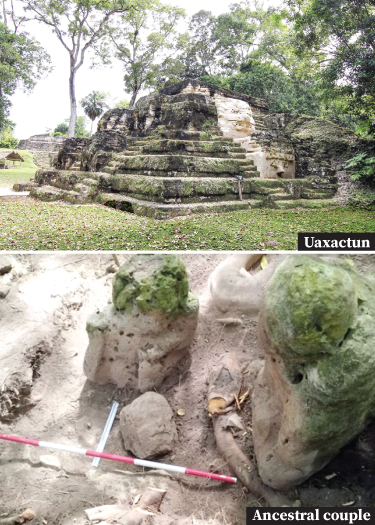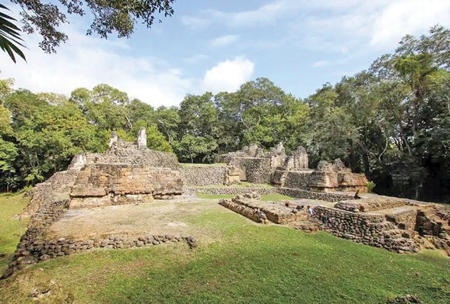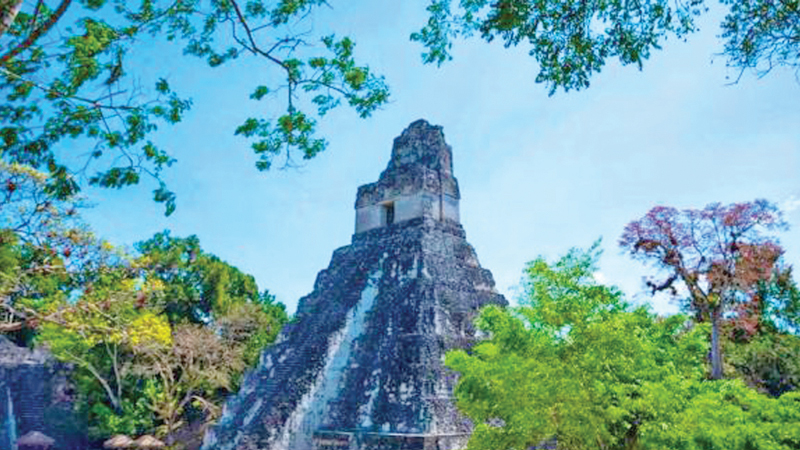South American archaeologists had reasons to celebrate last week following the discovery of a structural complex belonging to the Mayan civilisation buried deep within the jungles of Guatemala. The extensive findings revealed a remarkable canal system, sanctuaries and pyramids that shed light on one of the most ancient civilisations in the world, experts believe the city dates back to 800-500 BCE, and was once one of the earliest centres of ceremonial significance for the Mayans.
The uncovered complex spread across an expanse of three sites — Petnal, Los Abuelos, and Cambrayal — close to the important Mayan site, Uaxactún towards the Petén region north of Guatemala. Maya civilisation began to form around 2000 BCE in what is now southern Mexico, Guatemala, Belize, and parts of Honduras and El Salvador. The Mayans first appeared around 2,000 BCE and attained the summit of their technological advancements between 400 and 900 CE, centred on present-day Guatemala and Mexico. At its height, temples, roads, pyramids and other monuments filled its cities while complex systems of writing and sciences such as astronomy and mathematics dominated the intellectual spheres of the Mayans.
Los Abuelos
 In Spanish, Los Abuelos means “The grandparents” and the site is roughly 21 kilometres from Uaxactún. Its name is derived from two human-like rock formations discovered at its location, which many believe symbolises an “ancestral couple.” These formations, along with the several hallowed sanctuaries discovered, imply it was a significant location for Mayan rituals, according to Luis Rodrigo Carrillo, Guatemala’s Vice Minister of Culture and Sports.
In Spanish, Los Abuelos means “The grandparents” and the site is roughly 21 kilometres from Uaxactún. Its name is derived from two human-like rock formations discovered at its location, which many believe symbolises an “ancestral couple.” These formations, along with the several hallowed sanctuaries discovered, imply it was a significant location for Mayan rituals, according to Luis Rodrigo Carrillo, Guatemala’s Vice Minister of Culture and Sports.
“Located here is one of the most important ritual centres in the region, with notable sanctuaries, helping to reassess our understanding of Mayan history,” announced the ministry following the discovery.
More incredible ruins were found in Petnal, which is east of Los Abuelos, and feature a 33-metre-high (108-foot) pyramid. At its summit there are two well-preserved rooms embellished with murals displaying multifarious allegorical drawings, Carrillo said. Amidst these fantastic discoveries, excavators in Cambrayal have uncovered a sophisticated canal system within a palace complex, showcasing the Maya’s advanced understanding of hydraulic systems and urban planning, found 4.8 kilometres from Los Abuelos.
It is speculated that the three discovered sites formed an unidentified urban triangle with religious and commercial links hitherto unknown until now, the ministry was quoted saying to a foreign news agency. The new archaeological findings are a testament to the greatness of the Mayans, and echoes a technologically advanced past that refuses to remain buried.
The archeological dig was headed by Guatemalan and Slovakian archaeologists and many international experts under the Uaxactún Regional Archaeological Project (PARU) supported by Comenius University in Bratislava, Slovakia. The latest advances in archaeology, LiDAR (Light detection and ranging) a laser-based remote sensing technique— significantly aided researchers in discovering these ancient sites hidden beneath dense forest covers.
Tikal
April 2025 begot another remarkable discovery in the ancient Mayan city of Tikal, situated 23 kilometres, southward of Uaxactún, where an altar with human remains dating back to at least 1700 years was found within the city’s vicinity. However, archaeologists believe it probably stemmed from artists trained in Teotihuacan hundreds of miles away from the city. The giveaway was the altar murals which had remnants of red, yellow, and blue – colours associated with many of the murals in ancient Teotihuacan culture.
Timeline of Maya

Ancient structures at Los Abuelos
2000–1000 BCE is known as the Pre-classic or formative period of the Mayans where the early Mayan communities started farming, building villages, and developing pottery. This is when the foundations of their civilisation—like language, religion, and social organisation were at its inception.
From 1000 BCE–250 CE also called the Middle to Late Pre-classical period, larger cities started to develop, such as Nakbé and El Mirador in Guatemala. With urbanisation, the Maya started constructing pyramids and practising a complex religion based on a colourful mythology. The period from 250–900 BCE also known as the Classic Period is considered the Golden Age of Mayan Civilisation.
Impressive Mayan cities like Tikal, Copán, Calakmul, and Palenque came to be, while writing, astronomy, calendars and complex art forms took root in Mayan cities. Followed by the Post-classical period from around 900–1500CE, many Southern cities declined, while Northern cities like Chichén Itzá and Mayapán experienced a surge of power.
However, the Spanish conquest in the 1500’s put an end to any resurgence and the gradual decimation of Mayan culture and beliefs continued while Christianity was enforced on the Maya with Spanish missionaries and conquistadors trying to obliterate Mayan beliefs and replace them with Christian teachings.






